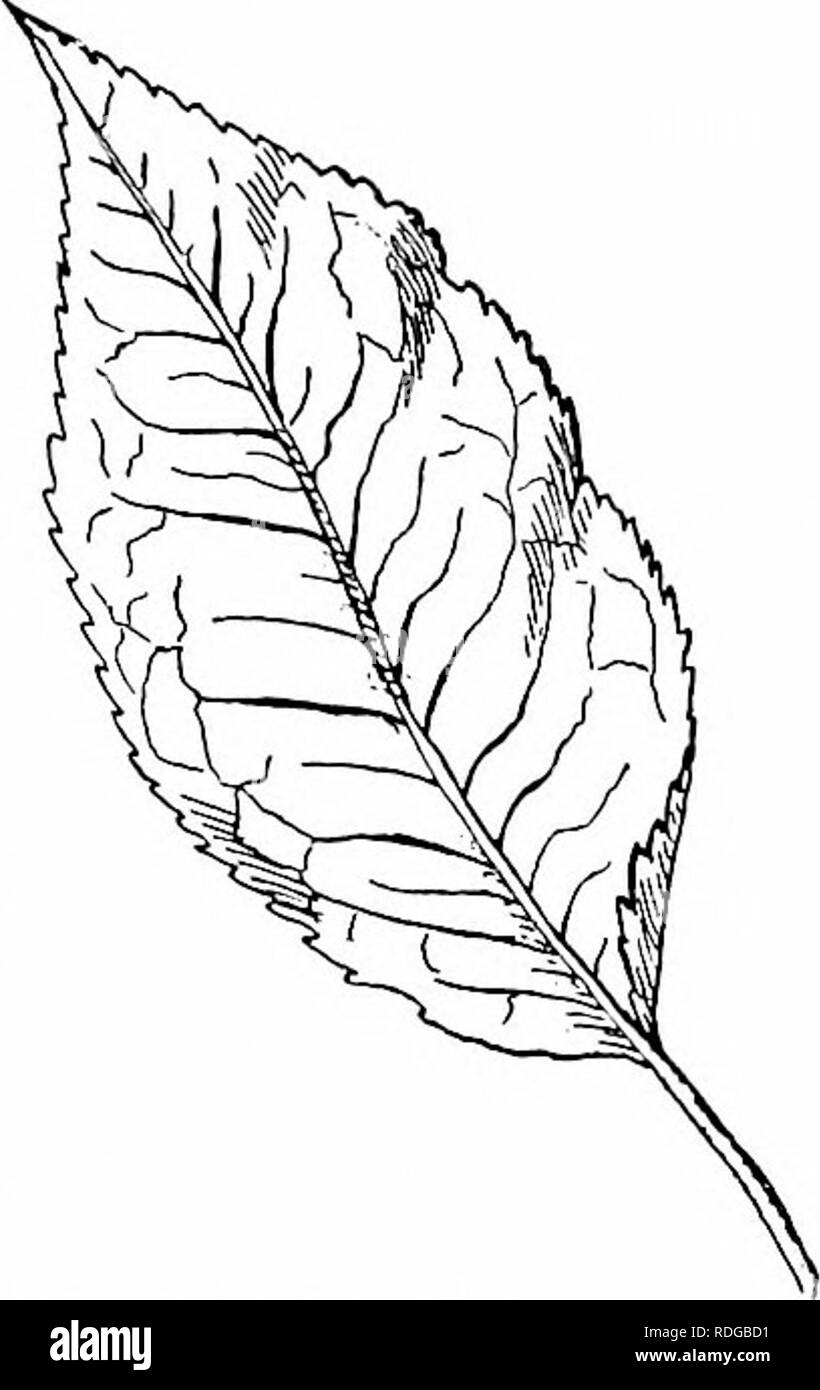. Our native trees and how to identify them; a popular study of their habits and their peculiarities. Trees. HOLLY. Mountain Holly, Ilex motiticola. Leaves 2f to 6' long. Ilex montkola, the Mountain Holly, is another species that becomes a tree, but is not very generally known. It is found in the Catskill Mountains and extends southward along the Alle- dianies as far as Alabama. The leaves do not at all suggest the pop- ular idea of a holly, as they are de- ciduous, light green, ovate or ob- long, wedge-shaped or rounded at base, serrate, acute at apex, and ut- terly destitute of spines or bri

Image details
Contributor:
The Book Worm / Alamy Stock PhotoImage ID:
RDGBD1File size:
7.1 MB (187.5 KB Compressed download)Releases:
Model - no | Property - noDo I need a release?Dimensions:
1256 x 1989 px | 21.3 x 33.7 cm | 8.4 x 13.3 inches | 150dpiMore information:
This image is a public domain image, which means either that copyright has expired in the image or the copyright holder has waived their copyright. Alamy charges you a fee for access to the high resolution copy of the image.
This image could have imperfections as it’s either historical or reportage.
. Our native trees and how to identify them; a popular study of their habits and their peculiarities. Trees. HOLLY. Mountain Holly, Ilex motiticola. Leaves 2f to 6' long. Ilex montkola, the Mountain Holly, is another species that becomes a tree, but is not very generally known. It is found in the Catskill Mountains and extends southward along the Alle- dianies as far as Alabama. The leaves do not at all suggest the pop- ular idea of a holly, as they are de- ciduous, light green, ovate or ob- long, wedge-shaped or rounded at base, serrate, acute at apex, and ut- terly destitute of spines or bristles. They vary from two to six inches in length. The white flowers appear in June when the leaves are more than half grown. The fruit is spherical, nearly half an inch in diameter and bright scarlet. It is a tree of re- markably slow growth ; a specimen in the American Museum of Natural History, New York, is five inches in diameter and shows one hundred and seven layers of annual growth, of which seventy-nine are sapwood. The genus Ilex is widely distributed over the world. It has no representative west of the Rocky Mountains, nor any in Australia. But South America is rich in them, the West Indies alone have ten species, eastern North America has fourteen, India twenty-four, China and Japan over thirty. Europe, strange to say, has only one, but that one has been developed into innumerable varieties. One hun- cred and seventy-live species have already been noted, and undoubtedly there are others not yet described. The fossil remains which are now known give confirmation of the fact that plants are ever changing. The species of to- Jay are rarely the species of a former age. The rocks tell us lhat in the early tertiary period several forms of Ilex ex- isted in the arctic regions. .Ilex spinescens, a fossil form, is believed to be the remote com- mon ancestor of the American and European Christmas Hollies. 45. Please note that these images are extracted from scanned page images